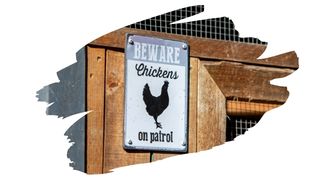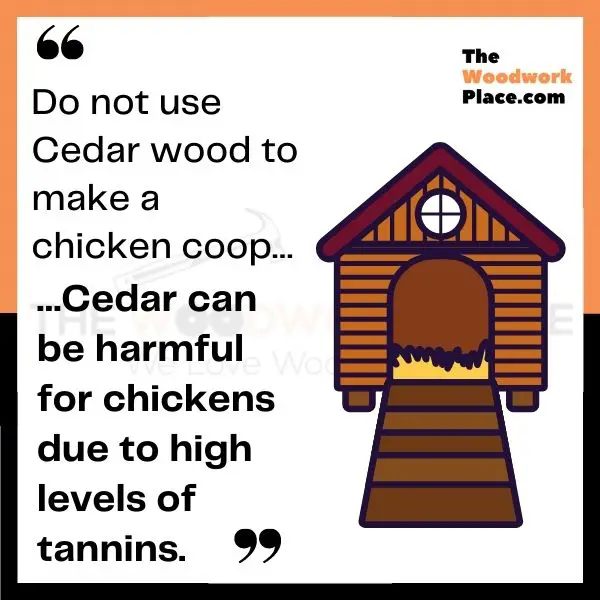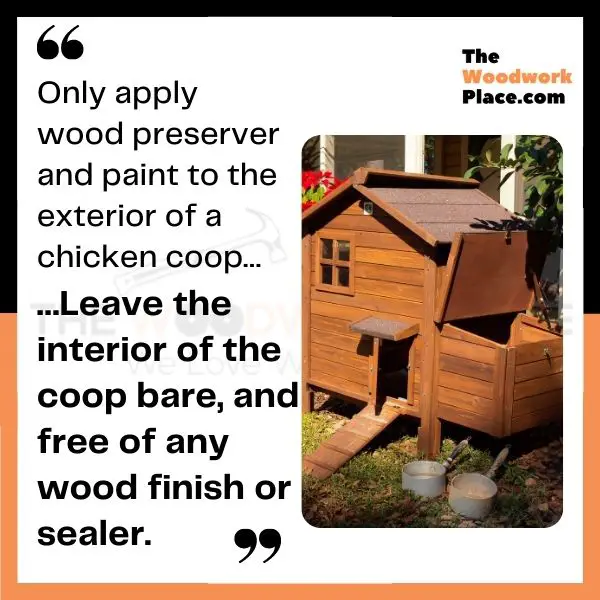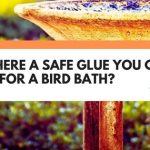Making a homemade chicken coop can be a fun woodworking project. What’s more, a well made wooden coop not only keeps your chickens shielded from predators, it also gives them a warm and safe place to shelter.
But, wood is a perishable raw material. And wood will always need some kind of sealer if it is to weather the elements. So, while there are plenty of great wood sealing choices out there, finding one that is safe to use around poultry, is key.
But, if you want to protect a wooden chicken coop, what are your best non-toxic options?
Well, in this post, you will find out which wood preserver product is perfectly safe to use on a chicken coop (and why). You will also learn why painting a chicken coop with a VOC-free paint is so important.
Plus, we explain why you should never use Cedar or Redwood to build a hen house…

This post may contain affiliate links to products that we receive a commission for (at no additional cost to you). Learn more here.
How Do You Protect A Wooden Chicken Coop?
Any outdoor wooden structure needs to be able to keep out water, damp, and bugs. To do this we need to protect lumber both inside and out. And we can do this by following three key steps;
1). Use Durable Lumber
As a general rule of thumb, raw lumber will rot and decay away if left outside.
However, certain types of wood are naturally rot-resistant. And these particular types of rot-resistant wood are better suited for crafting outdoor structures like a chicken coop.
2). Use A Wood Preservative
Wood preservatives work by soaking into wood grain, coating all of those internal wood fibers. The job of a wood preservative isn’t to seal wood. Rather, its main role is to make wood less water absorbent.
So, while a wood preservative can protect wood, it is best used as a base coat. And it will need some kind of top coat to go over it.
3). Use A Waterproof Top Coat
Waterproof top coats, such as polyurethane or even paint, can help prevent water from soaking into wood.
Now, a lot of top coats can contain chemicals that are harmful to chickens. Yet, there are certain types of paint that are safe enough to use on a chicken coop.
Lets cover all three of these steps in a bit more depth…
STEP 1: Use A Chicken-Safe Durable Lumber
One of the best ways to protect a chicken coop is by using lumber that can naturally resist rot and decay – even without any extra wood preservative.
But, you need to make sure that the type of wood you use is also safe to use around chickens too.
For example, Cedar often gets recommended as a durable chicken-safe lumber. But, Cedar is the furthest thing from safe (around chickens). And that is due to its Tannin content…
What Are Tannins And Why Do They Matter For Wood?
Tannins are a chemical compound found all around us in nature. They’re in everything; from the food we eat, to the wine we drink.
And they are also found in abundance in the bark of trees too, helping to prevent bacteria and fungi from growing on tree trunks.
In very small amounts, tannins aren’t a risk to either human health or to the health of pets and animals. But, in higher concentrated amounts, tannins have been known to cause serious damage to health.
And, what’s more, poultry such as chickens are particularly sensitive to tannins. If exposed to high concentrations of this stuff, chickens can begin to suffer significant dietary and nutritional problems.

What Rot-Resistant Lumber Also Has Low Tannin Levels?
Well, first off, popular chicken-coop wood types such as Cedar and Redwood are highly rot resistant.
However, they also have incredibly high levels of tannins in them. So much so, that brownish-looking tannin can even bleed out of the lumber, (and seep through a coat of paint).
In short; do not use Cedar or Redwood to make a chicken coop!
On the other hand, Pine wood is a rot resistant lumber that has fairly low tannin levels. In other words, Pine wood is a better choice for your chicken coop.
Related Post: Poplar Wood vs Pine (5 Things You Need To Consider)
STEP 2: Use A Chicken-Safe Wood Preserver
Now, in general, you wouldn’t use a wood preserver on a bird house or other bird-specific structure.
That is because some birds, such as Parrots, like to chew on wood. And, any lumber that has been coated with a wood finish, will pose a health danger to these birds.
You can learn more about this in our post: Is Teak Oil Safe For Birds? (How To Safely Finish A Bird House)
However, in the case of chickens, poultry don’t chew wood. If they do start to chew on wood, that is an indication that they are very hungry.
In any case, using a pet-safe wood preservative on a chicken coop is perfectly fine.
Still, it is worth pointing out that you should only coat the outside of the chicken coop with a wood finish, preservative, or top coat. The inside of the coop should always be left bare and free of any finish (for your chickens safety).
OK, So How Do You Treat The Wood Of A Chicken Coop?
By using an odorless clear preservative (one that is also suitable for exterior use). Which is why Cuprinol’s Clear Wood Preserver is the best thing for your homemade chicken coop.
It’s safe enough to coat onto chicken coops, rabbit hutches, and even bee hives. After application, it will immediately work at preventing rot and decay. And, best of all, it is incredibly easy to apply and coats on effortlessly.
Now, as brilliant as Cuprinol Wood Preserver is, it does have one flaw. This finish does not have any kind of UV resistant additive in it. Which means, that if it is used to coat an outdoor structure, ultraviolet rays will damage the coat.
So, this clear finish should only be used as a base coat. And that means it will need a top coat of paint or sealer to go over it…

STEP 3: Use A Chicken-Safe Top Coat
This final step brings everything together by preventing rain water from seeping into wood.
Now, just to quickly clarify here, there are few 100% waterproof wood sealers out there.
Most wood sealers and paints are ‘microporous’ finishes. A microporous finish is one that will prevent liquids and water droplets from getting past it, yet will still allow water vapor to pass through.
Microporous finishes are a good thing for timber. Especially as natural wood likes to release a bit of water vapor every now and then.
Yet, using these finishes also means that even wood sealer coated timber can suffer water damage, (especially if it gets an absolute drenching).
However, the combination of a microporous finish (that keeps out rainwater/droplets), with a wood preservative, (that prevents wood fibers from absorbing water vapor), should be enough to protect that hen house.
In which case, a top coat of paint (over a Curpinol base coat) should be all your coop needs to handle whatever Mother Nature throws at it.
Great! So, What Kind Of Paint Is Non-Toxic To Chickens?
The main thing you should look for in a non-toxic paint is one that releases virtually zero fumes.
Those fumes, (formally referred to as Volatile Organic Compounds or VOC’s), can do real damage to the fragile lungs of chickens.
So, use a 100% VOC free paint, one that does not contain any harmful solvents or other unwholesome additives. For example, Little Knights offer a 100% VOC-free paint that is wholly odorless and doesn’t contain any carcinogens.
This allergen-free paint uses quality ingredients that won’t release any dangerous fumes around your chickens.
You can discover more about Little Knights VOC-free paint over on their official website right here.
And, if you want to learn more about using bird safe paint, then check out our post: Is There A Bird Safe Paint For Wood? (+ Why VOC’s Are The Real Problem)
Related Post: Is There A Chicken-Safe Paint? (All About VOC-Free Chicken Coop Paint)
To Wrap Up, Here Are The 3 Key Takeaways…
1). Do not use Cedar wood to make a chicken coop. Cedar can be harmful for chickens due to its high level of tannins.
2). Use Cuprinol wood preserver for a base coat. And apply a quality VOC-free paint as a top coat.
3). Only apply wood preserver and paint to the exterior of a chicken coop. Leave the interior bare of any kind of wood finish or sealer.
References:
Tannins and human health: a review – National Library Of Medicine

